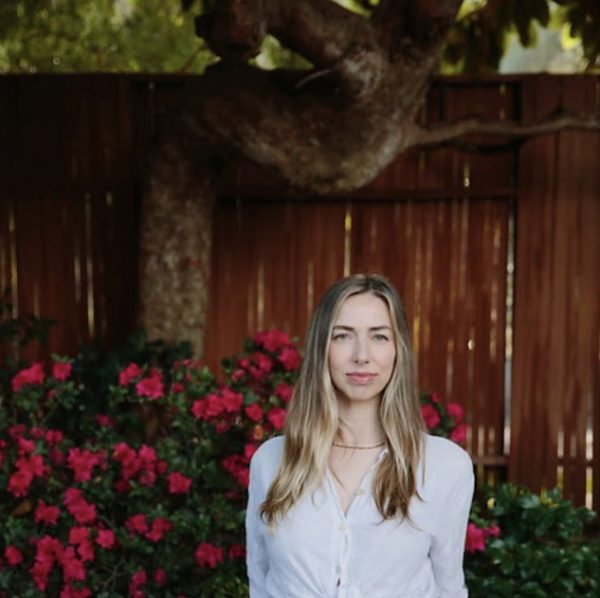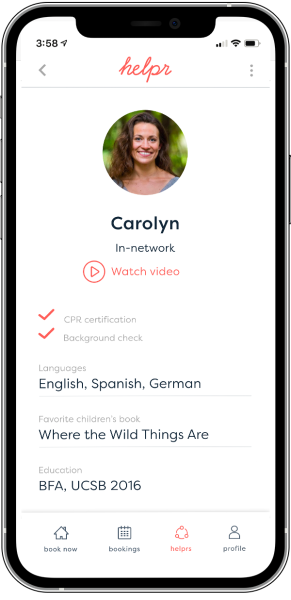Helpr is a benefits platform that provides employees and their families with access to a wide range of care solutions, including child, adult, and special needs care, on a part-time, full-time, or backup basis. Pulse 2.0 interviewed Helpr co-founder and CEO Kasey Edwards to gain a deeper understanding of the company.
Kasey Edwards’ Background

Could you tell me more about your background? Edwards said:
“I was born and raised in Southern California, where I grew up watching my mom run a daycare center out of our home. From an early age, I was involved in care systems in my neighborhood.”
“I witnessed how thoughtful and reliable care plays a vital role in helping families find balance and peace of mind. The children in our family business became my closest childhood friends. I later started babysitting as a teen, which continued through college, until I eventually ran a regional nanny placement agency. Later I was a foster parent, then scaled up my business focus to Helpr, a SaaS enabled care platform focusing on addressing the care crisis at the cost of care. We help employers deploy a subsidy to employees for a backup care plan that is geared toward servicing mixed population companies where desk workers and foot workers are all essential.“
“It has also been a joy to work on legislation and advancing infrastructure for the care economy.”
Formation Of The Company
How did the idea for Helpr come together? Edwards shared:
“My co-founder and I have a long history in the care space—both as babysitters when we were teens and through college. Growing up, our families relied on friends, neighbors, and community members for childcare instead of hiring sitters from a service.”
“We built and ran a professional care marketplace for many years, which we still retain as a service line for Helpr. However, the idea for Helpr’s My Choice Care—allowing families to upload and compensate their own care providers—came from recognizing that working-class families often have no option but to rely on trusted family and friends for care.”
“We wanted to create a tool that is more authentic to our own experience and that also helps companies offer care benefits at a fraction of the hourly cost of traditional offerings since grandma isn’t typically getting as many competing job requests as someone you find online.”
“Care costs are subsidized by the employer, so workers pay as little as $0/hr for the service. In return, companies see higher attendance, increased productivity, retention, and happier employees.”
Favorite Memory
What has been your favorite memory working for Helpr so far? Edwards reflected:
“I truly love to hear from our customers. As just one example, we were made aware of a mom right now who is using her employer-subsidized care hours to book more shifts at her job to save up to buy a safe car for her and her baby. It feels amazing to partner with employers to make this type of life-changing impact.”
“I also appreciate the ability to raise awareness about the need for more modern and better care options for employees. Childcare continues to be a huge challenge for working families, while they also face juggling care for elderly family members. We recently announced Helpr’s 2025 Blueprint for Better Care Benefits Report, examining struggles U.S. families face managing family care and how lack of access is costing U.S. employers in terms of absenteeism and voluntary turnover. The report also offers a blueprint for companies to create a cost-effective family care benefit that serves both employees and employers.”
Core Products

What are Helpr’s core products and features? Edwards explained:
“Our patented offering is our My Choice care. Employees can upload members of their care support network using this service. It makes childcare, adult care, elder care, self-care, and ‘taking care of each other’ more affordable and accessible for working families while providing an employee benefit that delivers an unmatched ROI to employers.”
“Using this feature, employees can easily book care from friends, family, and neighbors when unexpected care gaps arise. For instance, it can be used for last-minute business trips, school closures, or the illness of a regular care provider to give employees greater peace of mind and enable employers to help increase productivity and workplace satisfaction.”
“Helpr also offers access to other flexible solutions including thousands of vetted care providers and over 1,000 care centers in our app. We are available in 150+ countries and capable of launching anywhere to ensure accessibility and support for a globally diverse workforce.”
“Other benefits include seamless Integration with HRIS systems, personalized care support, and clear benefit tracking for employers.”
Challenges Faced
Have you faced any challenges in your sector of work recently? Edwards acknowledged:
“The care benefits space is often very competitive. Employers usually settle on a single care benefit to ‘check the box,’ and decisions are heavily influenced by the personal preferences of the HR team handling the benefits. These preferences are shaped by factors like whether they have care needs themselves, the type of care they require, and how they address those needs.”
“At Helpr, we understand that every family is unique, and care solutions shouldn’t be one-size-fits-all—we listen to the needs of frontline and hourly employees and cater our care benefits to meet those needs. With a comprehensive suite of backup care and care finder services, we ensure no one is left behind—regardless of where they live or what they do. For workforces that aren’t desk-bound, we’re simply the best choice.”
Evolution Of The Company’s Technology
How has the company’s technology evolved since launching? Edwards noted:
“The original Helpr app was much more marketplace-focused—great sitters with a split cost with the employer to help families get to work in care gaps (like when days off at school don’t line up with days off at work). Since then, we’ve layered in center-based care options, and our My Choice care option lets families choose their own care provider and pay them with a company-sponsored subsidy. With this change, we’ve been able to care for families in so many more corners of the globe without sacrificing quality of care or enabling an inequity in benefits distribution.”
Significant Milestones
What have been some of Helpr’s most significant milestones? Edwards cited:
“Going global in 150 countries and dealing with local currencies was a big one. We can help to ensure that there are no cultural barriers and that caregivers are paid quickly in their local currency. The same $15 subsidy in the US can translate to an equivalent subsidy in Mexico, Greece, or wherever a global company’s employees are present.”
Customer Success Stories
When asking Edwards about customer success stories, she highlighted:
“We have a lot of great stories. One exceptional story is about an employee who broke both of her hands in an accident and needed help with everyday life while she healed. Helpr found her an in-home care provider quickly and at no cost through our Care Finder program when she made her way back from the hospital.”
“The employee also used her backup hours to pay her provider to ease the financial burden of a very unexpected care cost. The employee returned to work when she was ready and able, and her employer retained a fantastic team member.”
Funding/Revenue
When asking Edwards about the company’s funding and revenue details, she revealed:
“Helpr runs a profitable shop, and we’ve raised a series of Seed funding with just a few million in venture capital from strategic firms and angels.”
Total Addressable Market
What total addressable market (TAM) size is Helpr pursuing? Edwards assessed:
“The care that takes place under the table and the radar in the US alone is in the trillions of dollars. We want to capture that market and use it to power affordable care options for enterprises and healthcare insurers, all while helping families get high-quality support from their known and trusted networks.”
Differentiation From The Competition
What differentiates Helpr from its competition? Edwards affirmed:
“Our patented My Choice care program is absolutely what is needed for employers with an hourly workforce. Employees can choose their own care provider and pay them with a company-sponsored subsidy, which is often more affordable than traditional options. This is especially useful for hourly workers whose shifts don’t align with daycare hours or for those who need overnight care, which can be inaccessible and expensive.”
“Helpr gives employers an option to address the needs of all types of workers—international teams, remote teams, those in rural areas or in care deserts, and those with special needs—to democratize the backup care benefit and support the family care needs of disparate markets.”
Future Goals
What are some of Helpr’s future goals? Edwards emphasized:
“We’re chipping away at the cost of care for families by bringing new payers to the table while keeping the care network small and special. We’re excited to introduce Helpr to the healthcare industry through programs like the Consumer Directed Personal Assistance Program (CDPAP) in New York and others.”
“These programs will empower patients to prioritize their health by providing access to backup care and transportation support, ensuring they can attend their own medical appointments without added stress. This approach not only supports families but also promotes overall well-being by addressing critical gaps in care accessibility.”
Additional Thoughts
Any other topics you would like to discuss? Edwards concluded:
“These days, many families rely on grandparents to help with raising children, but there’s growing tension around this arrangement. On the one hand, grandparents provide essential care, but on the other, there’s a desire for them to be fairly compensated for their time and effort. This dynamic can create financial and emotional pressure within families.”
“Helpr offers a solution that helps ease this tension. By enabling families to use company-sponsored care subsidies to pay their chosen caregivers—including grandparents—Helpr ensures they receive the recognition and support they deserve while keeping care accessible and affordable for families. It’s a win-win that strengthens family bonds and relieves the stress of unpaid care.”


